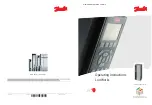
WXR545PL
Trailer Wood Splitter
Storing the Wood Splitter
31
7.2 Connecting a Tow Vehicle
1.
Keep bystanders are clear of the machine.
2.
Make sure there is enough room and clearance to
safely back up to the machine.
3.
Slowly back the tow vehicle until the coupler on the
hitch and ball are aligned.
00207
Fig. 28 –
Ball Hitch Aligned
4.
Lift the hitch and place the coupler over the ball on
the hitch.
5.
Flip the latch to lock the coupler around the ball.
6.
Raise the rear jack stand and secure with the snap
lock pin.
7.
Cross safety chains under trailer tongue and attach
securely to the tow vehicle hitch.
8.
Connect the wiring harness for the lights (as
equipped).
9.
Reverse the above procedure when unhooking.
8. Storing the Wood Splitter
After the season's use and the wood splitter is going to
be put away in storage, it should be thoroughly inspected
and prepared. Repair or replace any worn or damaged
components to prevent any unnecessary down time at the
start of next season. The wood splitter can have a long,
trouble-free life by following these steps:
IMPORTANT! Refer to the engine manufacturer's
manual for information specific to engine storage.
1.
Fully retract the cylinder ram.
2.
Thoroughly wash the machine using a pressure
washer to remove all dirt, mud, debris, and residue.
3.
Inspect the wedge, cylinder ram, push block and
wear plates for damage or entangled material. Repair
or replace damaged parts. Remove all entangled
material.
4.
Touch up all paint nicks and scratches to prevent
rusting.
5.
Turn fuel valve OFF.
6.
If the splitter is to be stored for longer periods
(over 6 months), follow the engine manufacturers
recommendations for storage preparation.
7.
Store the machine in an area away from human
activity.
8.
Select an area that is dry, level and free of debris to
park the wood splitter.
9.
If the wood splitter is not stored inside a building,
cover with a waterproof tarp. Tie securely in place.
10.
Do not allow children to play on or around the stored
machine.
8.1 Removing from Storage
1.
Review and follow the Pre-operation Checklist. See
2.











































